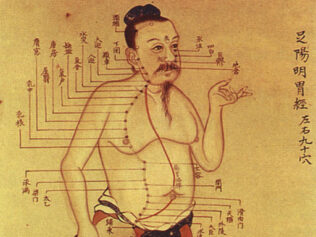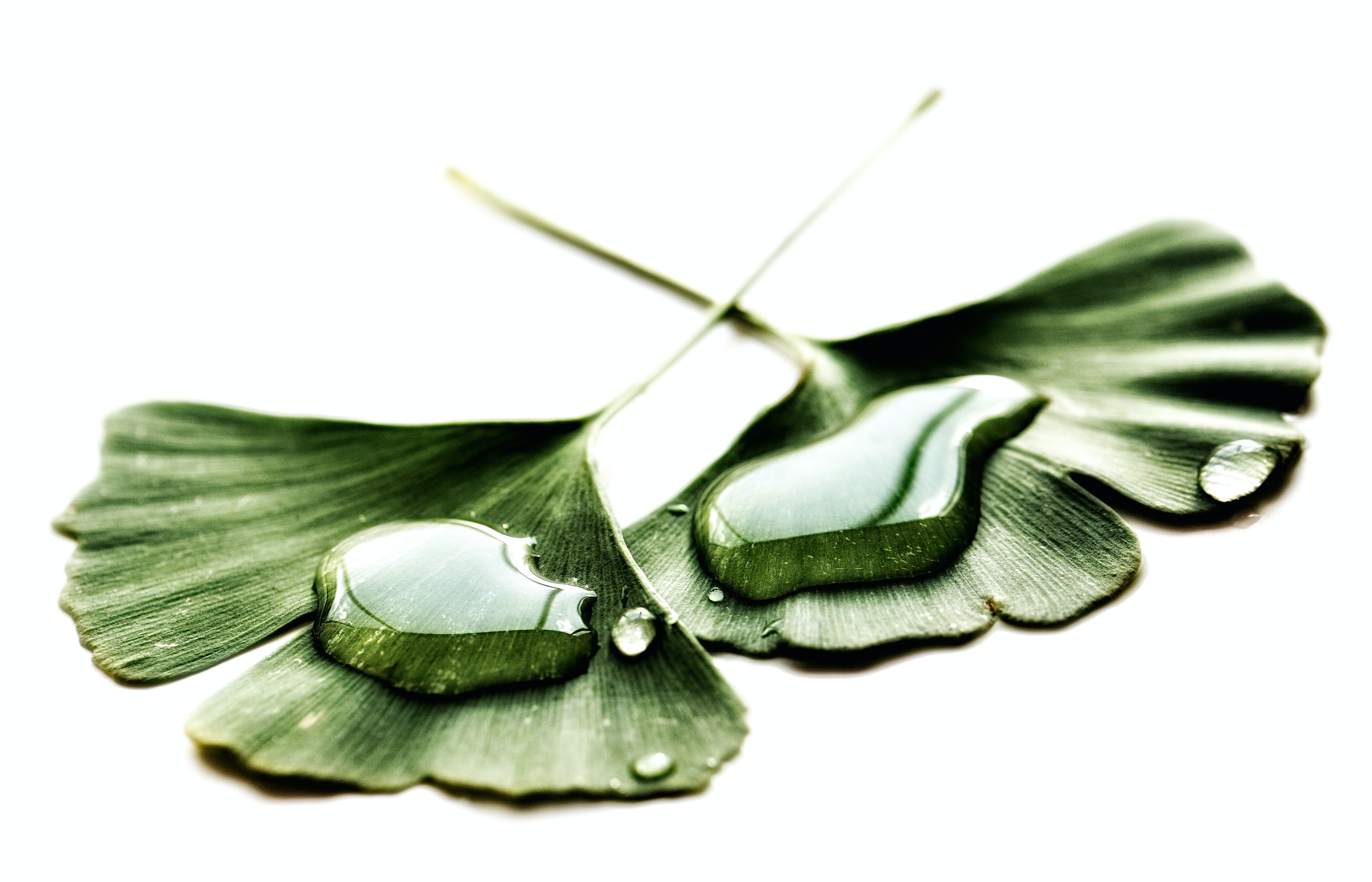
Ayurveda teaches us to observe our bodies and harmonize them with nature. Ayurvedic therapist Patrycja Sadowska explains how to practice this ancient healing system today, far from its native India.
Maria Hawranek: I have read that there are three types of doshas, our constitutions, and each one of them is a combination of two of the five elements: fire, air, ether, earth and water. What does this all mean?
Patrycja Sadowska: When I read about it for the first time, it seemed abstract and confusing. Elements? In my body? Like some other Ayurvedic therapists, instead of doshas, I use the term ‘managers’. We think of our body as a very complex organic machine, inhabited by our soul. Do you know what your liver is doing right now?
I have no idea.
Precisely. We say that many processes in our bodies happen without us being aware of them. You know that your heart is beating, but you cannot control it. Ayurveda says that it is controlled by three doshas, three managers of the Body Corporation: vata, pitta and kapha. Like in any other company, one of them is usually more outspoken and controlling, while the others are quiet, but their work remains essential – each one is responsible for their own department. Our constitution tells us which one of them is likely to show off in our body, speech and psyche. It is not always one manager who is in charge; often there are two leaders. That is why Ayurveda recognizes seven constitutions – three single ones, three mixed, and a balanced one, with the three doshas equally powerful.
What determines our constitution?
Out parents’ constitutions, the mother’s and father’s doshas, and the course of the pregnancy. This is the natural dosha – prakriti. Imagine that your parents give you a car or a truck, which you will use for the rest of your life. This is why in India the constitution is determined at birth – the doctor takes a look at the baby, immediately knows that they are, for example, a vata, and then hands the parents a guide with a list of products and activities that will be good for their child. Then the prakriti can remain balanced for their whole life. But if you are not aware of your natural constitution, you can develop habits that are detrimental for it. Let’s say you are a vata, but your parents give you fresh vegetables for breakfast. You won’t be able to digest them. If the natural constitution is not balanced, vikriti, an acquired constitution arises. Getting back to the vehicle analogy – imagine you had a regular-sized car but you didn’t know about it and decided to use it to transport huge IKEA boxes. There are ropes and clip hooks hanging all around, but you manage. It can last a while, but is not good for you. Ayurveda’s advice is to take down the ropes and the clip hooks, and use the car in the way that it was intended to be used – this will improve the quality of your life and reduce the risk of developing illnesses.
After we exchanged a couple of emails, you suspected my natural constitution was vata/pitta. How is this possible?
Ayurveda is a knowledge about life encompassing both the body and the mind. Constitutions are also visible in the way we communicate. For example, kaphas, earth and water, are slower – before setting up a meeting, kaphas need time to think, and their messages are less dynamic. Vatas set up a meeting for the next day and, being creative, use a lot words in their correspondence. Pittas are organized. There is a fire in everything they do, and they inspire others to follow them. This knowledge helps me not only in my therapeutic work, but also in my daily life. If I know my friend is a vata, I will remind them about a Friday dinner at my place at least three times. If they are a pitta, I can rest assured they will cook something and bring it by. This makes all relationships easier to manage.
Are the recommendations for particular constitutions very different, if babies in India already receive them at birth?
Some recommendations apply to all constitutions. Ayurveda encourages everyone to live in harmony with nature and observe it. If your body is balanced, you should listen to what it has to say. You don’t need to test your levels of vitamins or examine your tissues under a microscope. All you have to do is learn to observe and feel the way the body works, and start drawing conclusions. Ayurveda recommends going to sleep at sundown and waking up before sunset, but the number of hours of sleep you need is based on your constitution. Vatas don’t have the earth element, so they are usually fragile and petite. They need to curl up under a blanket and stay in bed longer than kaphas, who usually have bigger bodies and need more activity. That is why vatas need nine hours of sleep, while kaphas only need six – they have to get up and start moving.
What about dietary recommendations?
It is a similar situation. Ayurveda recommends everyone to keep steady meal hours, with the biggest meal eaten around noon, when the sun is shining bright and our enzymes are activated, boosting our digestion. But, again, what and how much you should eat depends on your constitution. The bodies of kaphas, which include more earth, are naturally well-built, even if they don’t eat much. These are the bodies that can survive hunger or war; they are the most enduring ones. That is why kaphas are encouraged to skip breakfast, which they often do instinctively, since they tend not to eat before 11am. Vatas, on the other hand, have a close connection to the wind, so they need to anchor themselves to the ground through long sleep and heavy meals. If they don’t eat breakfast, vatas can get dizzy at work. As we know, pittas are connected to fire, the most powerful digestive force. They can eat anything. The only thing that can make them sick is drinking too much wine or eating too many tomatoes, because they, too, contain fire. Pittas can eat more than other doshas – they can handle it.
What if you have two equally-important managers?
Ayurveda gives us other tools that teach us how to tend to our doshas. Each of them has particular properties called gunas. If you observe how your body reacts, you can see which of the doshas is in the lead and take care of your organism accordingly. Vata is associated with coldness and dryness. If your skin turns dry and your feet get cold, you need to restore the balance by attracting the opposites – warm your body up with a meal, and give it some extra greasiness by rubbing your skin with oil or eating ghee. Kapha means heaviness and greasiness, which sometimes manifests through excessive weight. Instead of oil, kaphas should rub their skin with chickpea flour, reduce the amount of oil in their diet, and eat more green vegetables. Pittas, on the other hand, are naturally hot, they need cooling and soothing. Not with cold, which is bad for all constitutions, but with hibiscus or mint infusions.
So the crucial thing is to see what is going on in the body at a given moment.
That’s right. Focus on your digestion, on how your stool looks, on whether you slept well, whether you’re hungry. If, for example, I’m feeling irritated and aggressive, I’m sweating for no reason and have diarrhoea, it means pitta is taking the lead and it needs to be balanced out.
It is hard to say whether Ayurveda is 5000 or 40,000 years old, but it is definitely ancient and it comes from India. It is still popular there today?
It is deeply rooted in Indian culture. Even those who do not study it often naturally follow its teachings because, for example, their grandmas tell them to do something. There are chains of special pharmacies and Ayurvedic hospitals. But modern India is fascinated with the West and is abandoning Ayurveda, which is taking the back seat even in small towns, where until recently it has been the only healing method. Western medicine is in the lead. In 2015, as part of my studies, I went to an Ayurvedic conference in India and I was shocked – the students of local Ayurvedic universities were not interested in the lectures, some events had only 15 attendees in a room that could fit 500. It turned out that most students of Ayurveda were people who did not get into med school – usually women, since they do not have to support their families. Indians choose modern medicine, which quickly eliminates the symptoms and gives immediate results, but doesn’t necessarily treat the underlying conditions. The Vedas do say that Ayurveda is a system for the rich – you need time and money to prepare the medicine, have people performing massages, and so on. This is one of the reasons why a lot of emphasis is put on prevention and nipping diseases in the bud.
Just like in traditional Chinese medicine.
These two systems share many similar concepts, but the details differ. They come from different territories and are based on different herbs, but they both stress the importance of a diet based on local products.
Precisely, local products. This goes against the Ayurvedic dietary recommendations. During detox, you need to buy ghee, saffron, cumin, turmeric – things we don’t usually use in Poland. Even rice is not natural for a Slavic stomach.
It is difficult to reconcile the two, and there are different views on the subject in the Ayurvedic community. Some say that Ayurveda should have never left India, because those who don’t know Sanskrit, cannot read the source texts of the Vedas. Those a bit more modern say that the world needs holistic healing systems based on natural products, which not only provide us with recipes, but also teach us to observe our bodies and the nature around us. That is why Ayurveda is also widely used in the West. Some are trying to adapt the recipes from the Vedas to products available in Europe, describing the properties of the local fruit, vegetables and spices. Do they warm the body? How do they impact digestion? Atreya Smith wrote a book describing Western spices in Ayurvedic terms, and advocates prioritizing them as products that are a part of local culture.
All the herbs you prescribed to me come from India.
When I start working with a client, I try to stay close to the original – the properties of asafoetida, rice, herbs shipped from India. I know how they work, they are my basis. Only when the client’s body is balanced, do I gradually add seasonal and local products from our culture. The things we digest best are those that have been available in our area for a while. Our ancestors would probably have a hard time digesting bananas, but we can already handle them pretty well, though they should not be the basis of our diet. Rice can gradually be substituted with our groats, we can introduce local herbs.
We used to know so many herbs, but now we just use dill, parsley and oregano.
It is a shame, because we really need herbs! They are the medicine that helps us digest, and we can use them on our own. The basic Ayurvedic cooking set can be pricey, but it lasts for a long time. Cooking gets much quicker. In the end, this diet turns out to be the simplest and the cheapest. I buy groats, lentils, rice, seasonal vegetables and some herbs. I don’t buy processed foods, such as cheese and ready-made sauces, and they are the things that cost the most. Plus I already know where to find everything I need. In my home town, Bydgoszcz, the owner of a small greengrocer’s buys a lot of mung beans in the spring, because she knows that a lot of her clients will ask for it.
Is the type of legume important? What is better – yellow mung beans or lentils?
The traditional kitcheri recipe uses yellow mung beans because they are the easiest to digest. But if you can’t find them, don’t worry – just buy the green ones and soak them. The bigger the bean, the higher the risk of constipation, so the dish uses a lot of warming spices to enhance digestion. Lentils have slightly different properties. But in the end, everyone is their own master and healer – try out different products and check which ones fit you best.
I am the mistress of my own health? How do you understand that?
Ayurveda teaches us to think in terms of cause and effect, to ask why our bodies ail. I used to drinking a lot of water with ice, which causes gas. I stopped, and immediately the problem was gone. In time, as your knowledge evolves, you begin to understand why you have a headache in the morning, or get a pimple on your face, because you recognize the cause of the effect – you ate something you shouldn’t have, or the season changed. We make conscious decisions on what to eat, and if we get lost, we can find our way back to the right path. It is true that we get our health from our parents, in the sense that we inherit certain tendencies, we all have our issues. Knowing the rules of Ayurveda, we can learn how to neutralize those negative tendencies. Even if they cannot be treated, we can at least minimize their effects and not make the situation worse.
Through food?
According to Ayurveda, our health stems from the stomach. If our digestive system is balanced and working optimally, the body can produce healthy tissue. There are seven layers of tissue, the last one being the reproductive tissue. The idea is that if we eat according to our constitution, we can neutralize the natural tendencies. Of course, it also depends on the type of illness – there are some that Ayurveda can’t handle.
Ayurveda doesn’t heal all illnesses?
Ayurveda classifies illnesses based on whether they can be healed. Asadhya Vyadhi are the ailments that are untreatable. That is why an Ayurvedic therapist would never attempt to treat, for example, an advanced metastasized tumor. They will also avoid treating any conditions that have caused significant damage to bodily structures. However, Ayurveda can successfully treat less aggressive diseases using panchakarma. There is also a surgical branch which carries out some procedures, but in the case of major surgery, we recommend Western medicine specialists who are more effective in this regard. On the other hand, however, Ayurveda has great success in treating arthritis, psoriasis and Bell’s palsy, which the Western world doesn’t know what to do with. It is also effective in other ailments that require systemic balance. If someone is feeling unwell, they go from specialist to specialist, and nobody can pin down the problem, Ayurveda can often trace the roots of the issue.
What is panchakarma?
It is one of the basic Ayurvedic healing programmes, comprised of five cleansing actions. It completely resets the body – the digestive track and various levels of tissue. It is followed by a slow strengthening process based on a diet compatible with the constitution.
Is that the dramatic ritual with vomiting and enemas?
I know it sounds horrible, but it really is very pleasant! It may be a foreign concept for us, but Ayurveda is strongly rooted in nature. We have various openings in our bodies, and they all need cleaning. Vomiting helps purge our bodies of excess kapha, induced diarrhoea assists with excess pitta, and enemas get rid of excess vata. There are many methods of cleansing. Usually I don’t mention them at the beginning, I don’t want to discourage my clients. If vomiting occurs during the panchakarma therapy, we feel its beneficial impact, just like during any illness or food poisoning. Not everyone vomits during the therapy – the process is different for everyone, different herbs are chosen for each constitution. That is why it is so effective in treating various diseases. Western medicine treats all patients in the exact same way.
Can you give us any examples of such effects?
My mother had cancer. She opted for chemotherapy and radiotherapy, but she decided to supplement it with diet and Ayurvedic herbs recommended for patients undergoing chemo. She tolerated it very well, didn’t vomit, and was cheerful all along. A 26-year-old German guy I met suffered from an unidentified neurological condition. In Germany, he was stuck to a bed, he didn’t speak. Then, as a last resort, he went to India for Ayurvedic treatment. I met him again six months later, after three rounds of panchakarma. He was active, talkative and full of energy.
Who seeks the help of Ayurvedic therapists?
I work mostly with mature women undergoing menopause who do not want to use hormones recommended by their doctors. During menopause, you enter a period of vata and your diet needs to be adjusted to level out things like hot flushes. The ladies are doing great without any pills. I also treat many people with Hashimoto’s disease, which can be balanced out, and with digestive issues – some people have gas so painful that they are completely immobilized. Doctors are often unable to pinpoint the causes of digestive tract problems.
Scientists from the British Institute of Cancer Research claim that there is no scientific proof that Ayurveda can treat any illnesses. Is anyone researching Ayurveda using Western tools?
Western medicine is increasingly aware that some aspects of how our bodies work are still not fully understood, and it is slowly starting to look into Ayurveda. However, many doctors are still aggressive towards traditional Chinese medicine and Ayurveda, because they are based on natural products you can plant in your garden, without being dependent on Big Pharma. Depending on where you look, you can find different research results. I always say that all conflicts are bad for our health. I tell my clients that they don’t have to choose, they can synchronize. My patients include doctors, as well as people wary of Western medicine. It is good to focus on the best parts of each system – don’t rely entirely on either one, try them out and see how you feel. Ayurveda cares about quality of life, about feeling great in our bodies and minds. If we are not sure how to help someone, we send them to a specialist for further examination.
The recommendations are very precise – meticulous food measurements, strict meal schedules. Does violating any of the rules mean that the whole process is doomed?
If you want Ayurveda to work, you need to follow 60-70% of the recommendations. The guidelines are long, because we know our clients won’t be following all of them. If you slip, we try to turn it into a teaching moment. Try following the rules as closely as you can for a week and see how you feel. If you eat something that does not fit the programme, such as raw apples in the morning, see how you feel, too. All the answers are in your body.
I feel like Ayurveda is time-consuming and tough for those who don’t like cooking.
It is all about practice. Preparing all my meals takes half an hour a day. Oatmeal first, then a single-pot meal or a baked vegetable which I eat for dinner, too. If someone is not able to cook or doesn’t have time for it, I always ask them what kind of food is served in their work cafeteria. We figure out which dishes they can eat and what spices to add, so that it is good for their bodies and fits their busy schedules.
I cannot imagine eating kitcheri for the rest of my life.
Even though during the detox my clients tell me they are fed up with it, later on it often turns out that kitcheri creeps back into their lives, because it’s simple and easy to digest. I have a love-hate relationship with it, too, depending on how much of it I eat at the time. After a consultation, you get recommendations regarding your diet, activity, therapy and herbs. Then you chose those that fit your life best.
Goodbye cold water? And raw vegetables?
In the case of the vegetables, it depends on the season and your constitution. You can eat salads in the summer, when there is more fire in nature. Cold products are never recommended – our stomachs work based on heat, so if we put in something cold, we need to use our vital energy to warm it up and then digest it, which lowers our energy levels during the day. It is best to eat warm, room-temperature, or slightly-cooled foods.
Does sushi make the cut?
It does, it is served at room temperature. Ice water doesn’t, but nothing horrible will happen if you drink it once in a while. Except that you will probably not feel hungry for a while, and if you do eat something, it can lead to indigestion and an energy drop. You can do anything you want, it is your life. But Ayurveda is always there for you. If you don’t feel well, you can go back to it, even if it’s just for a while.
Why is it bad to eat products prepared the day before?
Because they have less prana, vital energy. When you eat them, instead of invigorating you, they suck out your energy. Ayurveda considers them indigestible, which doesn’t matter much if you eat them once, but they can cause adverse effects in the long run.
You entered the path of Ayurveda because you obsessively controlled your body through all kinds of diets.
I was studying fashion design and was getting offers to be a catwalk model, but everyone kept saying I needed to lose a few pounds. This was the beginning of my sick fascination with diets and my struggle with my own body. I lost a lot of weight very quickly, but the diet exhausted me. I no longer knew what was good for me, I was afraid to eat certain products, I thought nothing worked for me, but, at the same time, I felt physically debilitated. Reaching and sustaining my target weight seemed like the most important thing in the world. My longest fast lasted around a month.
Were you anorexic?
I wouldn’t say that, but I definitely had some kind of a dietary psychosis. I knew it wasn’t good for me. I had just moved to Amsterdam, where I met a great dietitian. At the time, I was in a relationship and my partner had a son for whom we cooked. I decided to focus on the basics – learning how to eat. When I discovered the Ayurvedic studies, I didn’t know what Ayurveda was, but I liked the idea of understanding diets and going to India for an internship. My life changed completely. Food used to overwhelm me and stress me out, but now it gives me a sense of power and being in control of my own health. I don’t get sick. I have my own Ayurvedic therapist, I feel strong and fully cared for.
In our world, diet fixation is often a sign of an excessive need to control and trying to tame a powerful fear. Ayurveda is set on helping people who experience fear, right?
I assume everyone wants to have a good life. In order to do that, you need to keep your body in shape, but your head often sprints ahead and forgets about it. This is where Ayurveda comes in. It is the wisdom reminding you to pay attention to your body. The head says I want to eat another doughnut!, but Ayurveda tells you to examine your body. Will the doughnut be good for you, or will it make you frustrated? It is less about control and more about compromise – about what I want and what my body wants. If you find this balance, you have a chance of keeping your body healthy and having a high quality of life. The longer you walk down the path of Ayurveda, the less you need to argue with your head, because your experience tells you what is good for your body. You no longer crave some things, there are new products you enjoy eating. It is a long-distance adventure. Ayurveda doesn’t tell you to worry all night about deviating from your diet. It just encourages you to remember about your body.
Parts of this interview have been edited and condensed for clarity and brevity.

Air – moving matter.
Ayurveda University – in India, there are 273 institutions offering Ayurvedic higher education.
Doshas – three forms of vital energy that shape our characters and are responsible for the way our bodies work:
– vata: the ‘body manager’ of ether and air, in charge of movement.
– pitta: the ‘body manager” of water and fire, in charge of transformation,
– kapha: the ‘body manager” of earth and water, in charge of cohesion.
Earth – solid matter.
Ether – the space in which the matter is located.
Fire – transforming matter.
Gunas – 20 fundamental properties describing the world, arranged in opposing pairs, such as: warm–cold, dry–greasy.
Kitcheri – a traditional Ayurvedic cleansing dish (a mixture of yellow mung beans and basmati rice with a lot of spices).
Prakrit – the innate, unchanging constitution of the body, indicating the natural relations between the doshas.
Sanskrit – the classical language of ancient India.
Vedas – ancient Sanskrit texts, sacred books that once compiled the entirety of Hindu knowledge about the world.
Vikriti – an acquired constitution of the body, indicating the current relations and imbalances between the doshas.
Water – liquid matter.

Patrycja Sadowska:
Ayurvedic therapist and teacher, graduate of the Ayurveda Practitioner Studies at the Delight Academy in Amsterdam.
Translated from the Polish by Agata Rudowska










